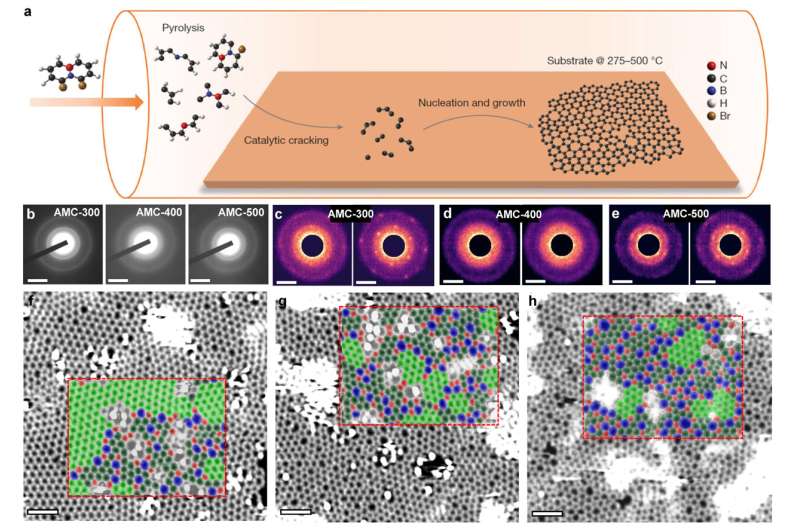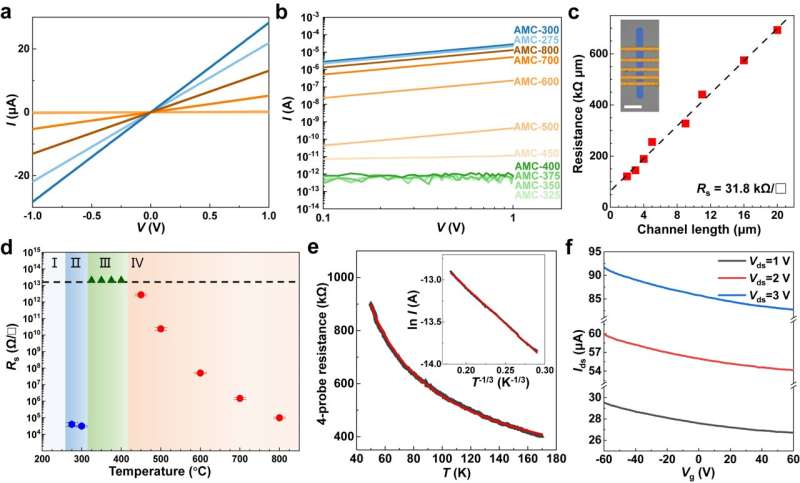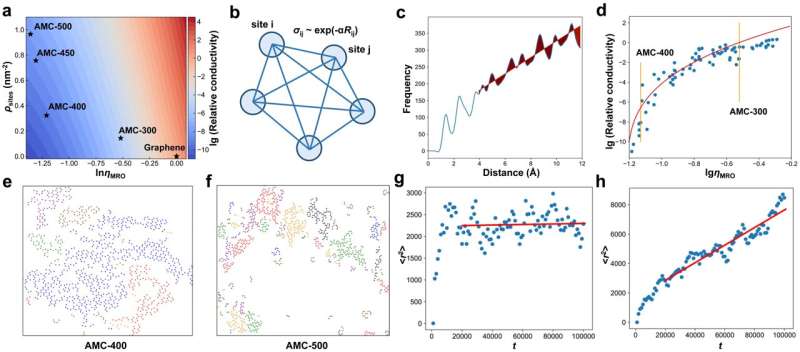This article has been reviewed according to Science X's editorial process and policies. Editors have highlighted the following attributes while ensuring the content's credibility:
fact-checked
peer-reviewed publication
trusted source
proofread
Researchers reveal structure-property relationship of two-dimensional amorphous carbon

Prof. Liu Lei's group from Peking University, users of the Steady-state High Magnetic Field Experimental Facility (SHMFF), Hefei Institutes of Physical Science (HFIPS) of the Chinese Academy of Sciences, together with Prof. Wang Zhaosheng from HFIPS and other collaborators, revealed the structure-property relationship in two-dimensional (2D) amorphous materials for the first time by studying amorphous monolayer carbon (AMC). The study was published in Nature.
The "microstructure determines properties" paradigm has been spectacularly successful in explaining and predicting the behavior of crystalline materials, and in deliberately manipulating material properties. In amorphous materials, the arrangement of atoms has no long-range order and the internal atoms cannot be directly observed, leading to the puzzle of their 3D atomic structure, and the relationship between atomic-scale structure and performance is still unclear. The study and characterization of disorder in amorphous structures is a long-standing puzzle in materials science and condensed matter physics.
To address this problem, the researchers exploited the property that "the atoms of 2D materials are all exposed on the surface, and their positions can be precisely analyzed" to resolve the atomic structure of amorphous materials.
They used a cyclic aromatic molecule as the precursor and adopted the chemical vapor deposition method. The temperature of the metal substrate was chosen as the main control parameter to precisely control the degree of thermal cracking of the precursor and the growth of AMC with different degrees of disorder (DOD).

Furthermore, electron diffraction and scanning transmission electron microscopy techniques were used to reveal the atomic structure of AMC, and the temperature-dependent characteristics of the medium-range order (MRO) differences and atomic structure in AMC were systematically analyzed.
In the electrical measurement of AMC, the researchers discovered a highly temperature-dependent property: at low temperatures (275–300 ℃), AMC exhibits high conductivity due to the weak MRO in AMC-275/300, while samples obtained at 325 ℃ become insulating.
In addition, Rs is negatively correlated with growth temperature at higher temperatures. Finally, the researchers have achieved continuous tunability of AMC conductivity over nine orders of magnitude. Variable-temperature Hall measurements with the SHMFF provided important insight into the electrical conductivity behavior of AMC samples.
Using density functional theory calculations and Monte Carlo simulations, the researchers correlated the atomic structure and electrical properties of 2D amorphous carbon, revealing the micro-mechanisms of AMC conductivity differences. They introduced a new structural order parameter—the average density of conducting sites- and plotted the "microstructure-macroscopic electrical performance" phase diagram by combining the middle range order.

These findings also show the complexity of DOD in amorphous materials, which cannot be described by MRO alone.
This work represents the first precise structure-property relationship in an amorphous material and provides new ideas for the fields of 2D materials, amorphous materials physics and applications.
More information: Huifeng Tian et al, Disorder-tuned conductivity in amorphous monolayer carbon, Nature (2023). DOI: 10.1038/s41586-022-05617-w
Journal information: Nature
Provided by Chinese Academy of Sciences




















